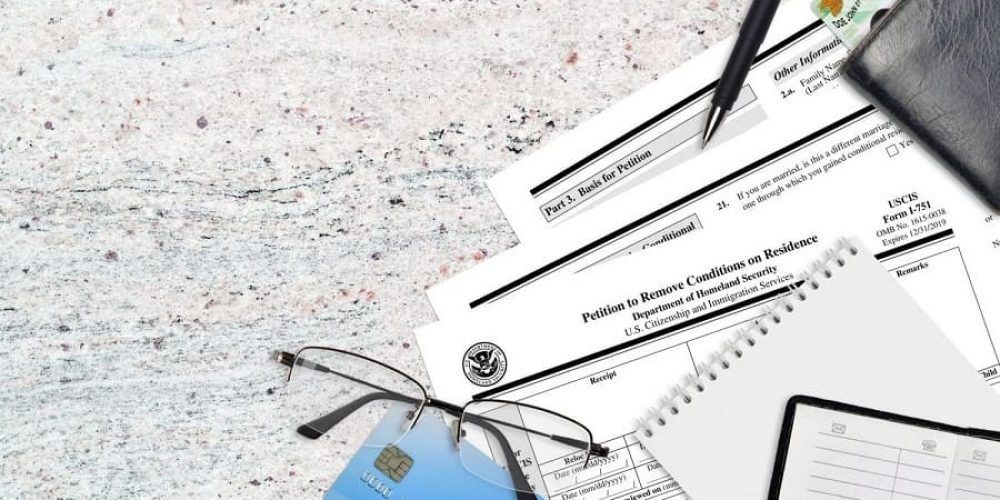The I-751 waiver is a critical form for conditional residents who obtained their status through marriage and are seeking to remove the conditions on their permanent residency. When we file the waiver, we’re essentially requesting the United States Citizenship and Immigration Services (USCIS) to waive the joint filing requirement for the I-751, Petition to Remove Conditions on Residence. This waiver is particularly important for individuals who have ended their marriages due to divorce, annulment, or the untimely death of their American spouse, or in cases of abuse.
Handling the I-751 waiver requires a comprehensive understanding of the immigration process and the necessary evidence to support the petition. We must demonstrate that the marriage was entered in good faith and not for the purpose of evading immigration laws. Moreover, when facing the end of a marriage, we’re tasked with gathering and providing extensive documentation to establish the bona fide nature of the marital relationship during its existence.
Navigating the complexities of this waiver, we must ensure full legal compliance to enhance the prospects of approval. Given the high stakes involved, accuracy and thoroughness are paramount, thereby underscoring the need for keen attention to detail throughout the preparation and submission of this waiver application.
Understanding the I-751 Waiver
The I-751 waiver allows conditional residents to remove the conditions on their residence in cases where they are no longer married to their sponsoring spouse or the marriage has ended due to specific circumstances. Now, let’s examine the specifics regarding eligibility, reasons for seeking a waiver, the filing process, and documentation.
Eligibility for I-751 Waiver
To apply for an I-751 waiver, an individual must demonstrate that they entered the marriage in good faith. The applicant must have been a conditional resident of the United States at the time of filing and meet at least one of the following criteria:
- Divorce: Proof of divorce from the spouse through whom conditional residency was gained.
- Abuse or Battering: Evidence of having been subjected to abuse or extreme cruelty by the U.S. citizen or permanent resident spouse.
- Widow or Widower: Documentation confirming that the spouse through whom conditional residency was obtained has passed away.
Reasons for Filing a Waiver
There are valid reasons to file the I-751 waiver independently. These include the termination of marriage via divorce or annulment, the death of the sponsoring U.S. citizen spouse, or being subjected to abuse by the spouse. Filing a waiver becomes necessary when the conditional resident is unable to file a joint petition due to these circumstances.
Filing Process and Timeframe
The process begins with filing Form I-751 at the appropriate USCIS Service Center. It’s crucial to apply 90 days before the second anniversary as a conditional resident. The timeframe for processing can vary, but typically ranges from 12 to 18 months. Applicants should expect to attend a biometrics appointment and may be called for an interview.
- File Form I-751 with USCIS.
- Attend a biometrics appointment.
- Possible interview.
Required Documentation
When applying for an I-751 waiver, we must submit a well-documented package to USCIS. Key documents include:
- Form I-751, Petition to Remove Conditions on Residence.
- Evidence of the qualifying relationship ending (e.g., divorce decree, death certificate).
- Proof of abuse, if applicable (e.g., police reports, court orders).
- Two passport-style photos.
- Additional evidence of the bona fide nature of the marriage (e.g., joint financial records, birth certificates of children).
After Filing the I-751 Waiver
After submitting the I-751 waiver, applicants enter a period of waiting and further processing by the United States Citizenship and Immigration Services (USCIS). We will navigate through each step, starting from receiving the initial acknowledgement to the ultimate decision regarding the waiver.
Receiving a Receipt Notice
Once we file the I-751 waiver, we should receive a Receipt Notice (Form I-797) from USCIS. This notice typically arrives within 30 days after filing and serves as proof that the petition has been received. It’s imperative to keep this notice safe as it contains our case number, which is necessary for tracking the status of our waiver.
Biometric Services Appointment
A few weeks after the Receipt Notice, we should expect a notice to appear for a biometric services appointment. At this appointment, we will provide our fingerprints, photo, and signature. This information is used to conduct a background and security check. The date, time, and location will be detailed in the appointment notice.
Interview and Decision
Not everyone will be requested to attend an interview. However, if required, USCIS will send us a notice with instructions on when and where to attend. At the interview, we must verify the information in our application and answer questions regarding our marriage and waiver request. Following the interview or review of our case, we will receive a decision, which could be an approval, request for evidence (RFE), or a denial of our I-751 waiver.
Conditional Residence Status During Review
During the review process, our status remains that of a conditional resident. Our conditional green card is automatically extended for 18 months when we receive the Receipt Notice. This extension allows us the right to work and travel.
By adhering to the procedures and awaiting the notices from USCIS, we maintain compliance with the immigration process and protect our status within the United States. Contact a family immigration lawyer.




Comments 0